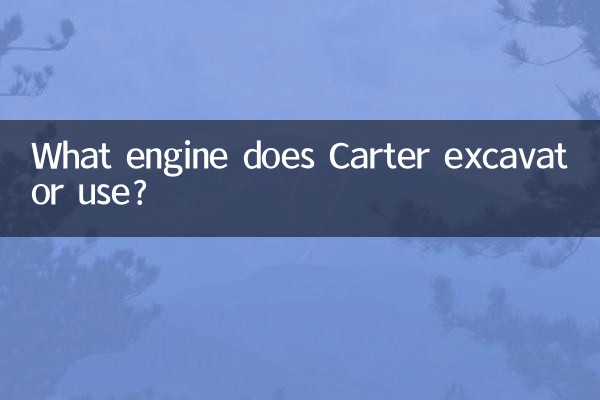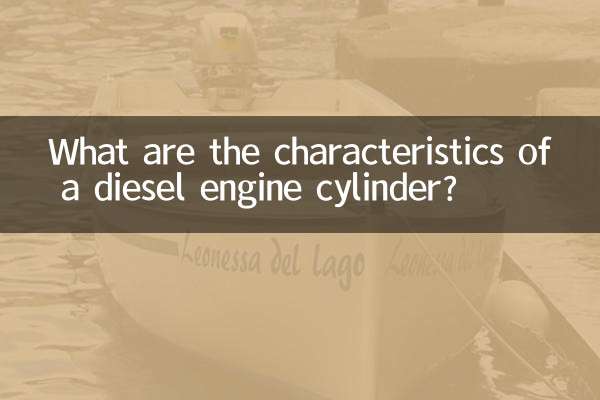What engine does Carter excavator use?
As a giant in the global construction machinery field, Caterpillar's excavator products are known for their high performance and reliability. As the core component of an excavator, the engine directly affects the power performance and fuel efficiency of the equipment. This article will introduce in detail the engine models, technical features and applicable scenarios commonly used in Carter excavators, and combine it with structured data to help readers quickly understand key information.
1. Commonly used engine models of Carter excavators

Carter excavators are equipped with different engines according to different models and tonnages. The following are the engine configurations corresponding to mainstream models:
| Excavator model | Engine model | Displacement(L) | Power (kW) | Emission standards |
|---|---|---|---|---|
| CAT 320 | C4.4 | 4.4 | 103-129 | National IV/Stage V |
| CAT 330 | C7.1 | 7.1 | 173-194 | National IV/Stage V |
| CAT 349 | C13 | 12.5 | 287-328 | National IV/Stage V |
| CAT 390F | C18 | 18.1 | 447-503 | National IV/Stage V |
2. Technical characteristics of Carter engine
1.ACERT Technology: Carter's patented clean emission technology reduces nitrogen oxide and particulate matter emissions through intelligent combustion control while maintaining efficient power output.
2.Electronically controlled high-pressure common rail fuel system: Accurately control fuel injection pressure and time, improving fuel economy by 10%-15%.
3.Modular design: The engine components are highly integrated, the maintenance convenience is significantly improved, and the average maintenance time is shortened by 30%.
4.Intelligent cooling system: Automatically adjust fan speed according to working conditions to reduce energy consumption and extend engine life.
3. Suggestions for engine selection under different working conditions
| Working condition type | Recommended engine | Advantages |
|---|---|---|
| Municipal Engineering | C4.4/C6.6 | Low noise, clean emissions |
| Mining | C13/C18 | Large torque, continuous high load capacity |
| Plateau work | Turbocharged models | Altitude compensation function, power loss <5% |
4. Maintenance points
1.Oil change interval: 500 hours under normal working conditions, shortened to 250 hours under heavy load conditions.
2.fuel filter: Check every 250 hours, if the moisture content exceeds 3%, it must be replaced.
3.Coolant test: Measure freezing point and pH value every month and keep pH value between 8.5-10.5.
4.DPF regeneration: When the instrument prompts that the particulate filter is saturated, active regeneration needs to be performed immediately.
5. Latest technology trends
The C9.3B engine launched by Carter in 2023 adoptsTwo-stage turbocharging technology, peak torque can be output at 1800rpm, and fuel consumption is reduced by 8% compared with the previous generation. This model has been configured on the new CAT 336 excavator and is particularly suitable for harsh working conditions such as energy mining.
From the above analysis, it can be seen that Carter excavators match exclusive engine solutions according to different application scenarios. Users need to comprehensively consider the operating environment, emission requirements and total ownership cost when purchasing, and choose the most suitable configuration solution.

check the details

check the details